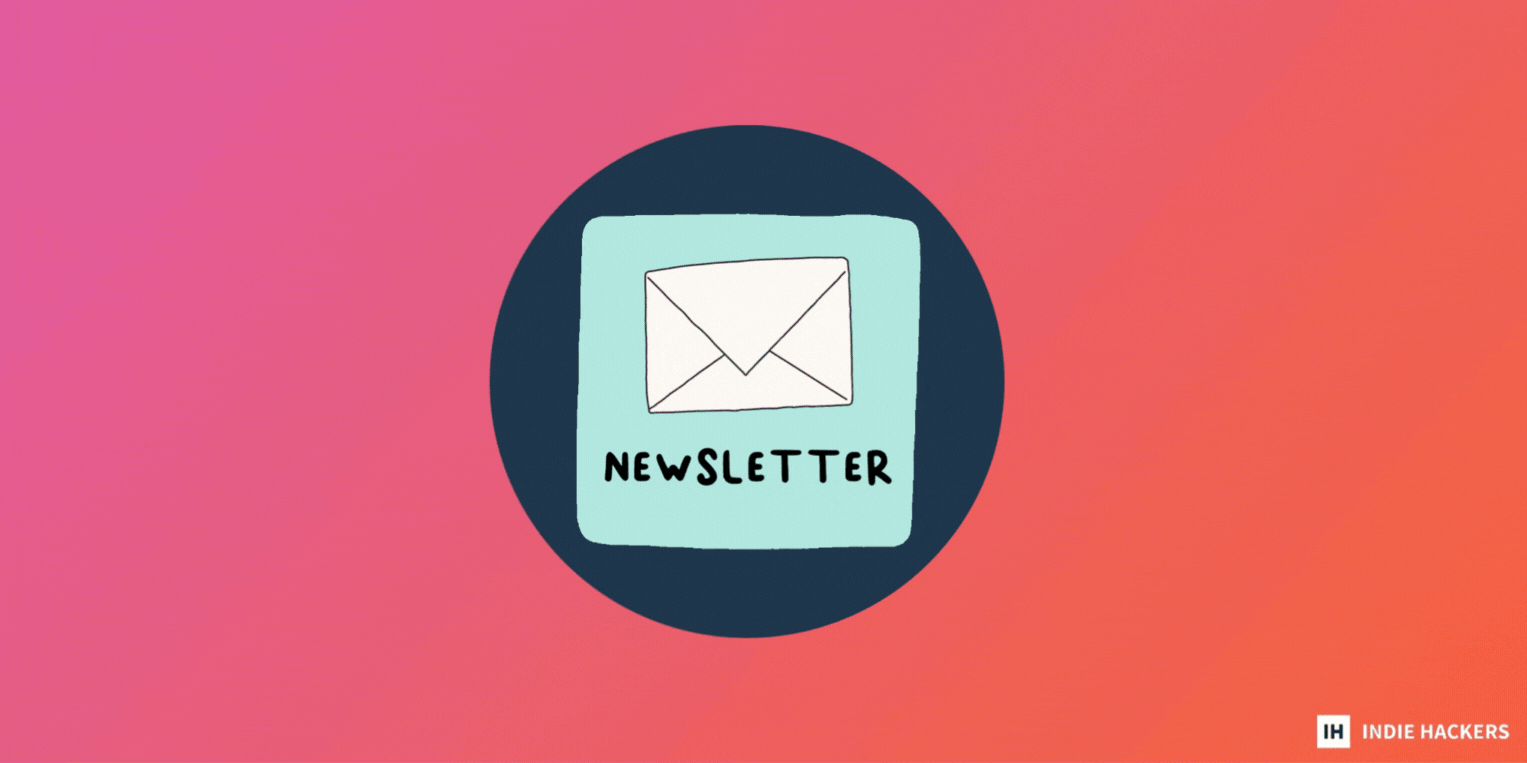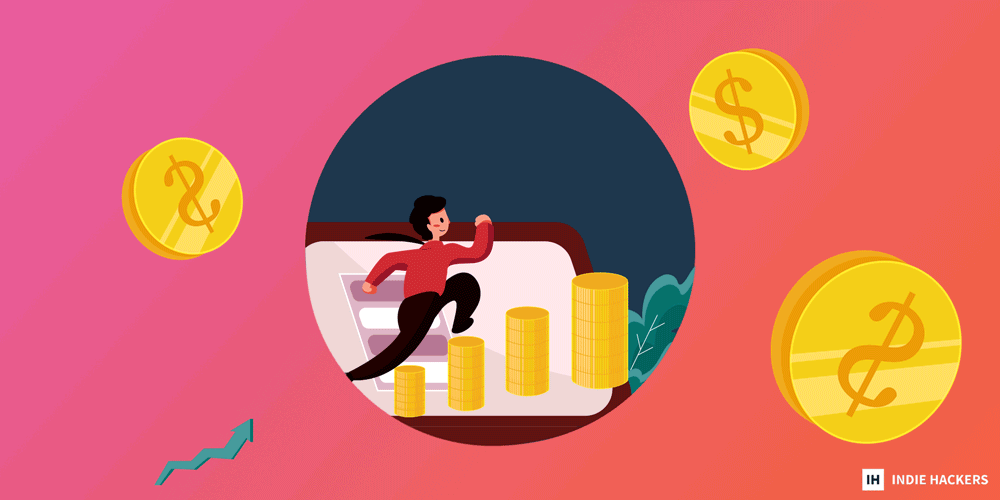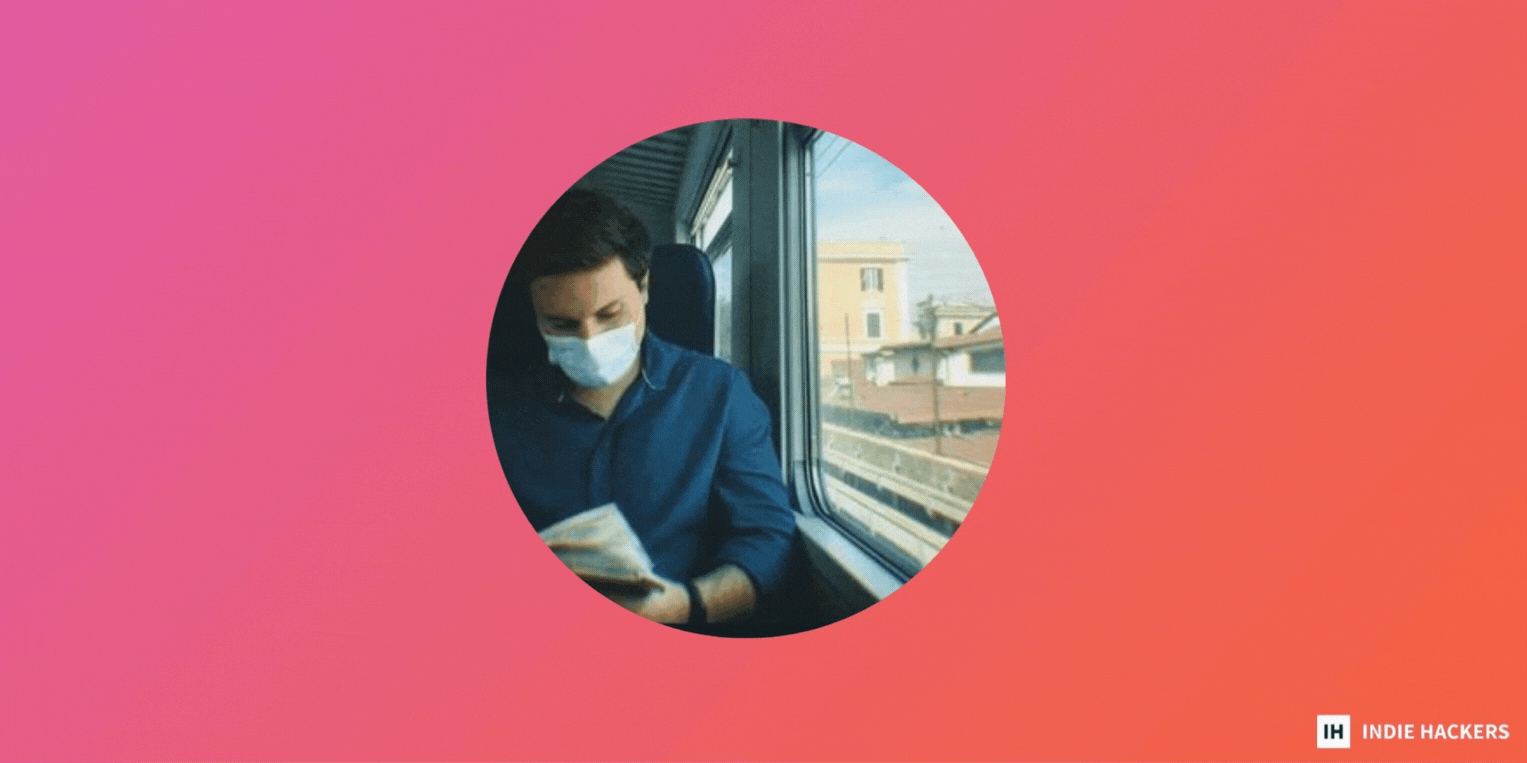Do you allow social logins for your product? - **For ease and convenience, implementing login through Google,** Facebook, Instagram, and other platforms could be a crucial step in user acquisition. Below, founders make the case for social login! - **
Do you allow social logins for your product?
-
For ease and convenience, implementing login through Google, Facebook, Instagram, and other platforms could be a crucial step in user acquisition. Below, founders make the case for social login!
-
Plan to launch a newsletter, or currently running one? The tips below can help you grow your audience with a budget of $1,000.
-
Founder Domenico built and sold 2 micro-startups in 6 months. Below, he shares his recommended formula for building and selling quickly, and the marketing channels that helped him hit $5,000 in revenue in 2 months.
Want to share something with over 100,000 indie hackers? Submit a section for us to include in a future newsletter. —Channing
📱 Users Want Social Logins

by Justin Chu
I dragged my feet on adding social logins to Mobo, my digital board game platform, for a long time. At the time, I didn't see how the benefits of adding social logins would justify the effort that it would take to implement. I thought that merely improving the product would generate a better ROI.
What ultimately kicked me into action was play testing my new game with a friend who told me that they would never create an account unless social login was supported.
Since implementing social login, I can see the benefits. Here's why you should hop on the social login train!
Implementation was easier than expected
I use AWS Cognito for Mobo because I use AWS for everything else, and it has a generous free tier.
I've found its documentation to be lacking and confusing at times, but once I was able to find the right documentation to follow, it became a lot easier.
High-level steps:
1: Register with social providers (Facebook, Google, Apple, etc.).
2: Configure integration with your user management system.
3: Build the UI for your app. Cognito had a pre-generated "Hosted UI," but it would've added an extra click for my users. I ended up using the source code to build my own custom UI to avoid this.
It only took me six hours to add "Sign in with Google" to my app.
The results
Ever since I deployed the new sign-in option, two-thirds (67%) of my new registered users have chosen to register with their Google accounts.
Registration is now a better experience because I don't need to force new users to confirm their email to complete their account. You'd be surprised at how many fake emails try to register! It also reduces the complexity on my end, as I directly manage less parts of the authentication process.
Adding Google authorization was my top priority because ~90% of my users have Gmail already. I will likely add Facebook and Apple in the near future as well.
My signups per day is now higher after making the change. I can't say that the new option directly increased signups, though, because I’ve also been marketing more on Reddit.
Ease and security
Binaek Sarkar finds himself bouncing off of services that do not offer at least one form of social login:
It's just easier to just click a button and be done with it! I find that having to muster up new passwords quickly gets frustrating.
From an engineering perspective, implementing a social login is so much easier than having to build all the bells and whistles (crypto, hashes, rotation, etc.) around passwords and usernames, and having to constantly worry about leaks!
Dylan Wilson says that most of the old advice about passwords is just plain wrong:
Telling people to have a specific combination of letters and numbers really just tells the hackers what kind of passwords to expect. Asking people to change their password regularly is even worse, because people tend to move towards easier ones over time. Also, if they're not using a password manager, you can bet your bottom dollar that they wrote it down on a Post-it note somewhere!
The most common type of hack happens simply because people reuse the same password on multiple sites. If one of those sites gets compromised (or even worse, they are the hackers), they can get into the other accounts.
So really, there's only a handful of solutions that actually work. Password managers, social logins (if you trust the third party), and two-factor authentication.
Social caution
Pdyc has a contrary opinion on social logins:
What if Google and other platforms decide that your app violates one of their policies and kicks you out? You will lose all of your customers logging in through that account, and it will be even worse if you have not collected their emails or contact info. In that event, you don't have a way to contact them at all, so you lose them permanently. This is a major risk for your business!
My suggestion is to always have a way to contact your customers. If you choose to use social login as a convenience to the customer, go for it, but don't rely solely on it.
Do you have social logins enabled for your product? Share below!
Discuss this story.
📰 In the News

from the Volv newsletter by Priyanka Vazirani
😈 The art of effective trolling (AKA, using trolling to make your marketing message stick).
💘 Metaverse dating is growing.
🏠 These futuristic 'living pods' will soon serve as floating homes.
👵 Portugal is now Europe's fastest-aging country.
💋 A new reality show wants to review your sex tapes.
Check out Volv for more 9-second news digests.
📫 Growing a Newsletter With $1K

by Jakob Greenfeld
You have a budget of $1K to grow a newsletter, with a goal of attracting as many high-quality subscribers as possible.
What steps will you take?
A blueprint
Upen lays out a blueprint:
I would be more inclined to create some kind of e-book or list, build a side project, or work with an influencer. I am planning to experiment with something similar for my newsletter, Micro SaaS Ideas.
Here are my thoughts for spending $1K and 40-50 hours (you can use one or a combination of these):
-
Build a side project that drives leads to the main newsletter. The side project doesn't have to be tech heavy. It should be able to be built using a simple no-code stack, and shouldn't take more than three days. This side project should be free, in order to generate more leads.
-
Create an e-book that is closely related to your audience. This could be paid or free. Keeping it free drives more subscribers to your newsletter, but making it paid helps you to better experiment.
-
Reach out to an influencer in your niche. Help them with a small, free product that they can use, in exchange for promoting your newsletter.
-
Pick an influencer and offer to write really high-quality content for free, in exchange for promoting your newsletter somewhere in the post or tweet.
Stack with Substack
Chris Nutbeen recommends going the Substack route:
I'd create a Substack account with both a free and premium option. I would focus on creating loads of great content to help my niche, publish the content to social, then use ads to promote it to that audience.
Some of the content would have a paywall (Substack) that subscribers could pay to join, either monthly at ~$15 per month, or annually at ~$150 per year.
This helps to build a community around a topic. Upsell premium by offering an invite to a private Discord server.
Content is key
Weaves87 hones in on one key hire:
Assuming I had a handle on the marketing aspect, and had a good idea of who my target audience is, I'd hire a good copywriter.
It's incredible how much a well-written piece of copy can convert.
That said, finding a good copywriter can be tough! It takes a while to find someone you mesh with, so don't rush the process.
Andrew Kamphey agrees:
I'd spend $200-$300 on creating an epic, amazing freebie: A guide, a tutorial, or a deep report. Then, I'd spend $500-ish on Facebook ads.
I did this to bring in new subscribers for Influence Weekly, my weekly report on influencer marketing trends. I created the "Influencer's Guide to Bali." Originally, I planned to sell this directly, but ultimately, it was an awesome freebie. I spent $500 on Facebook ads and got 620 new subscribers by adding this blurb: "Subscribe to this newsletter and you'll get the guide for free."
I spent money on a great illustrator, editor, and researcher, and it paid off.
Msethi7 adds that leveraging the power of LinkedIn could help:
Check out Justin Welsh's content on LinkedIn, and use the $1K to automate those steps.
Initially, hire someone to write a bunch of content in your niche. Post it on your personal LinkedIn. Spend money on a good post scheduler and LinkedIn analytics tool. Maybe build a nice landing page (this step is not necessary, though).
Generally, consistent content on LinkedIn and Twitter has been the most successful formula for launching a newsletter in the past year, so I would focus on this over paid ads.
Do you run a newsletter, or plan on launching one? Let's chat below!
Discuss this story.
👥 10M Users, Zero Funding

by Aytekin Tank
You may not need a cofounder.
Experts often advise founders to pair up, but there’s so much freedom in going it alone. If you’re worried that you don’t have all the necessary skills, read books, attend conferences, listen to podcasts, and do everything you can to patch those gaps. If your business succeeds, you can eventually hire brilliant people to fill in where you struggle.
Discuss this story.
🗓 Domenico Built and Sold Two Startups in Six Months

by Domenico
Hello, everyone! I'm Domenico, and I cofounded and sold two micro-startups in six months. We started with $0, didn't use any code, and maintained full-time jobs throughout.
Read on for more!
The background
It all started almost a year ago on Twitter when a new challenge was launched: The Build and Sell Challenge.
Here are the highlights of this challenge:
- You needed to build and sell something in 30 days.
- You needed to validate your idea in less than two weeks.
- The challenge was open to everyone.
- You would follow a sequence of activities suggested by the organizers.
It was an interesting challenge, so we decided to join in!
First product
Participating in this challenge meant that we needed to build and sell very quickly. The building phase is very important, but can also be the phase where founders tend to waste a lot of time.
To build our product quickly, we used no-code. It was not required, but if you want to build the first version of a product in just one week, you pretty much have to use it.
The product was called Pitch 2.0, and it allowed users to create a pitch deck in 60 seconds. The pitch deck information included the startup name, market, team, the problem, and the solution. We built and shipped the website in one week.
We reached more than 100 users in a few weeks, including three paid users. To be honest, there wasn't much in terms of revenue, but since this was our first project together, it was fine for us.
We never did ads. We didn't spend any money on marketing. All of our traffic was totally organic.
We built and sold this first micro-startup in almost two months, closing our deal at the end of February.
Second product
After the sale of our first product, we decided to create a second one. It wasn’t planned, but since we had gotten along well together, we decided to build something else.
Our second product, Lumelixr, was an AI product (GPT-3) that focused on translating text requests into Excel formulas.
For this product, we reached more than 500 users and hit a total income of ~$5K in two months (April and May). We closed the deal at the end of June.
Marketing channels
Here is a list of the marketing channels that we used:
- Indie Hackers.
- Reddit: Super useful, especially in the validation stage.
- Twitter DMs: Search for people using hashtags, according to your target.
- Kernal: Awesome for validation.
- LinkedIn.
- Facebook Groups.
- Online communities focused on our target audience.
We used the MicroAcquire platform to sell. It is amazing, and you can reach your goal very quickly. Due to agreements that I made regarding privacy, I can’t divulge the actual figures, but I can tell you the ROI:
- Pitch 2.0: ROI, 4000%.
- Lumelixr: ROI 4600%.
We didn't spend much money since we used no-code. The most significant expense we had was our Bubble plan, at $39 per month.
Managing time
Since we both have full-time jobs, the most important part was managing our time. It was crucial to remain constant with our work on the project. What helped me was dedicating at least one hour per day to my side projects. This is so important. Of course, I also used weekends to manage these projects.
I would suggest adopting a time management strategy that works for you. I love SCRUM Planning. It's helped me a lot!
Building quickly
I believe that OpenAI plus no-code tech is the best combination that you can use to build amazing products in a very short period of time.
It’s not so easy at the beginning, but you can learn it very quickly through watching YouTube videos.
Currently, I’m focusing my attention on two main things:
- Selling my third startup, Your Cover Letter. It uses GPT-3!
- Building my next startup venture focused on the AI model.
Thanks for reading!
Discuss this story.
🐦 The Tweetmaster's Pick

by Tweetmaster Flex
I post the tweets indie hackers share the most. Here's today's pick:

🏁 Enjoy This Newsletter?
Forward it to a friend, and let them know they can subscribe here.
Also, you can submit a section for us to include in a future newsletter.
Special thanks to Jay Avery for editing this issue, to Gabriella Federico for the illustrations, and to Justin Chu, Priyanka Vazirani, Jakob Greenfeld, Aytekin Tank, and Domenico for contributing posts. —Channing






